Editor’s Note: The EarthRider blog series focuses on adventure/off-road riding skills. If you haven’t read it already, check out our first installment, EarthRider 01: Meet Laine MacTague.
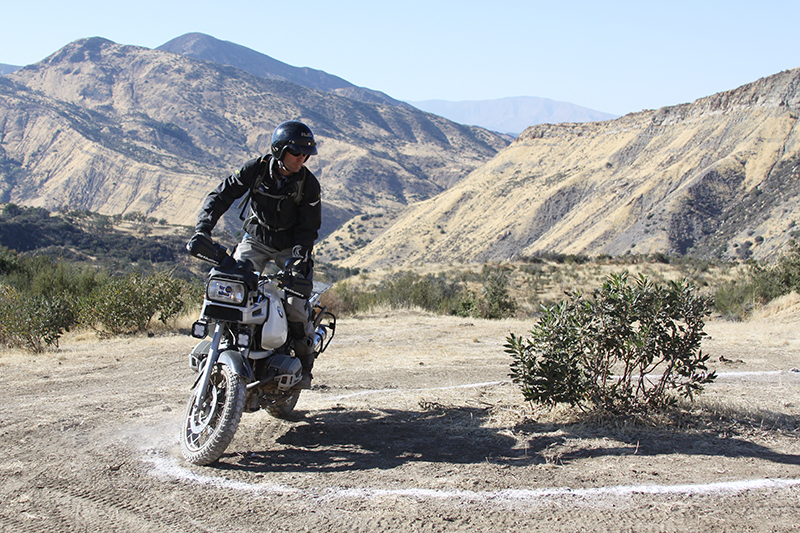
Are you a rolling stop rider? An outrigger rider? Both?
Motorcycles feel most unstable at slow speeds, leading some riders to minimize stops, roll through them or get both feet off the pegs and out to the side well before coming to a stop, for fear of a tip over. If this sounds like you, consider making a habit of practicing the following simple drill. It’s designed to improve your ability to control your motorcycle by fine-tuning your sense of balance. After familiarizing yourself with it, you will likely find that you can fit it easily into your everyday riding.
Like many of the subjects I intend to cover in the EarthRider blog, today’s simple drill will help any rider on any bike. However, since the focus of this column is the development of off-road riding skills and those are the skills I teach through my company, EarthRider Adventure Motorcycle Guiding & Instruction, I’ll assume you’re riding a dual-sport or adventure bike. By design, motorcycles designed to be ridden off-road have neutral, upright riding positions that make this drill safe and easy.
Hopefully you’ll come to think of this as a skill maintenance exercise and practice it almost every time you come to a stop. Initially, however, familiarize yourself with this drill in a parking lot or closed area where you’re not dealing with traffic or other hazards.
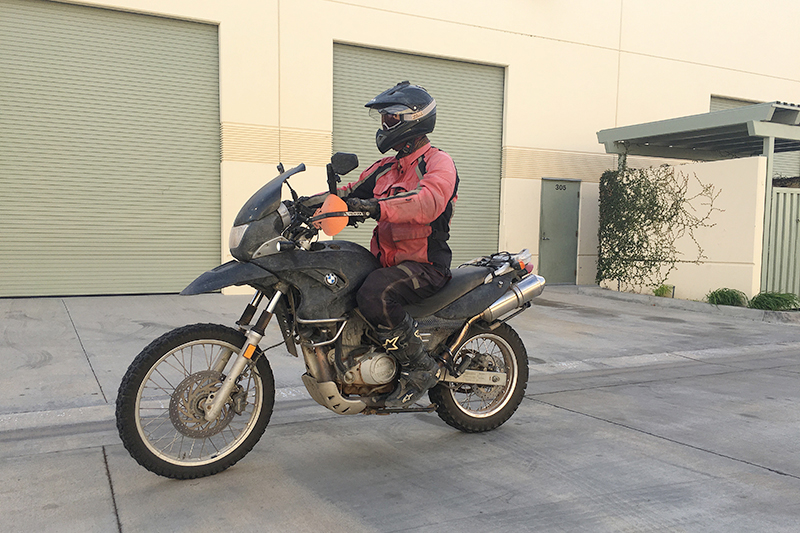
Pick a painted line, concrete seam or other reference point where you’ll come to a complete stop. While seated on your bike, ride toward the reference point in a straight line—25 mph or slower is fine—and then make an easy, routine stop. Use either or both brakes, but cover both the front brake lever with your hand and rear brake pedal with your foot as you stop. Keep both feet on the pegs until you absolutely, positively have to put a foot on the ground to keep from falling over. Then put one foot—only one!—on the ground.
Which foot do you put down? The one you are falling toward.
Here is the first, very subtle way in which this drill can improve your ability to control your bike: If you are in the habit of approaching a stop with both feet down, then you really never need to know which way you tip, as you come to a stop. The simple act of sensing which way you are tipping, and then reacting to it by putting the correct foot down, requires a level of awareness of your own balance. It may take you some time to develop this awareness to the point that your sense of balance is acute, and you react almost without thinking about the information it gives you. Once you have that awareness, and have honed your ability to react to it, you will be a more balanced, controlled rider.
The following two items are important any time you do this drill.
Pick Your Foot Up, Before You Put It Down
Most adventure and dual-sport motorcycles have cleated or serrated footpegs that can snag against the sole of your riding boot. Also, beware of loose bootlaces or pant cuffs that can get hung up on the footpegs. Don’t slide your foot off a toothy peg; consciously pick it up and place it on the ground.
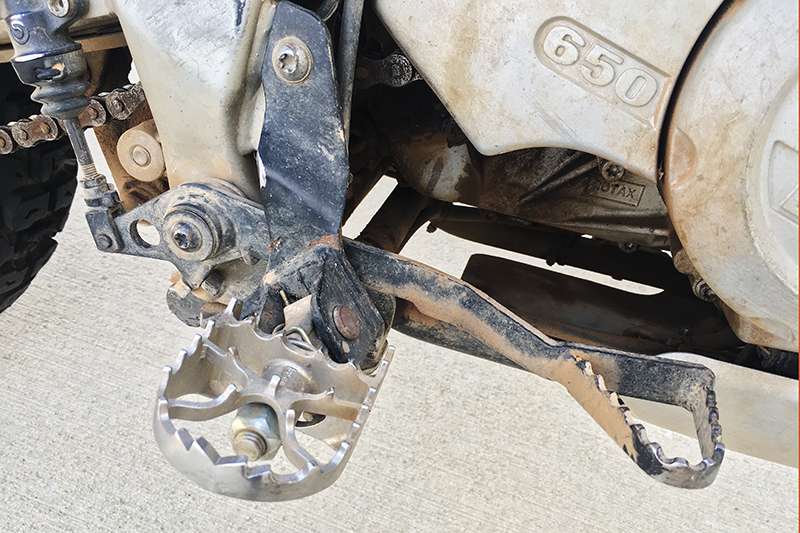
Keep Your Eyes Up
At first, you may have the urge to look down at the ground as you stop, or at your foot as you place it on the ground. Remember, our eventual goal is to do this all the time, where you’ll make stops while simultaneously looking side to side for hazards. Keeping your eyes up is an invaluable skill for off-road riders. Imagine yourself forced by terrain to ride slower than walking speed through a rutted, sandy, off-camber turn, while also reading the terrain beyond the turn and planning your line—a common situation on mountain fire roads—and you can see what I mean.
Experiment with the next two items away from traffic or other hazards until you become proficient. The information you gain will make you a safer rider, and you will likely be able to quickly incorporate what you learn into your regular riding.
Experiment with Braking
The reason you cover both brakes is because if you have to put down your brake foot—for example, if there’s a rut or steep slope on your left side—then you’ll need to use the front brake to complete the stop. Try this drill using each brake by itself as well as using both together. Many ABS-equipped motorcycles allow you to turn off the ABS; if this applies to your bike, try this drill with different combinations of brakes, with or without ABS, and on and off pavement. Try stopping slowly at first, and remember to apply brake pressure gradually.
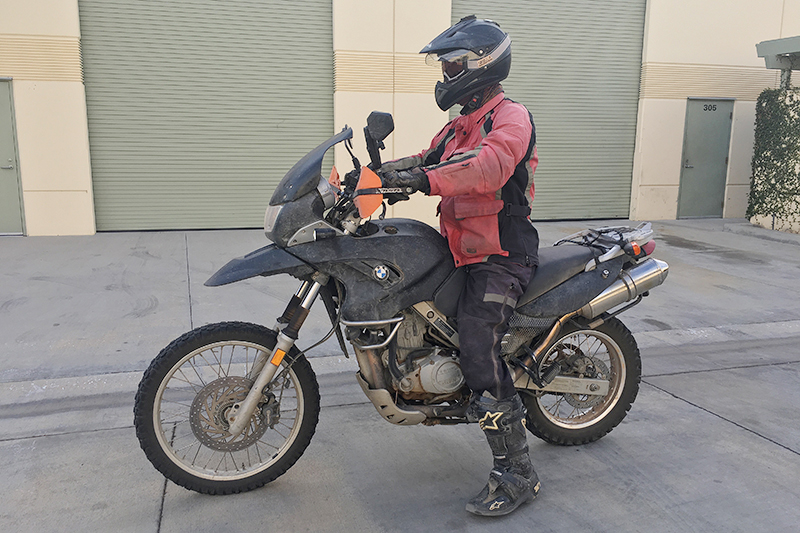
Experiment with Body Position—and Condition
Sitting farther forward or back on the seat affects how easy it is to maintain balance. Adventure riders will benefit from thinking about why body position matters—the answer underlies a fundamental principle about how to control motorcycles on rough terrain. This drill can also help you become more self-aware. Over time, you may notice that things like your mood, how hungry or tired you are, or your level of fitness can affect your balance—and with it, your ability to control your motorcycle. Some of your observations may surprise you!
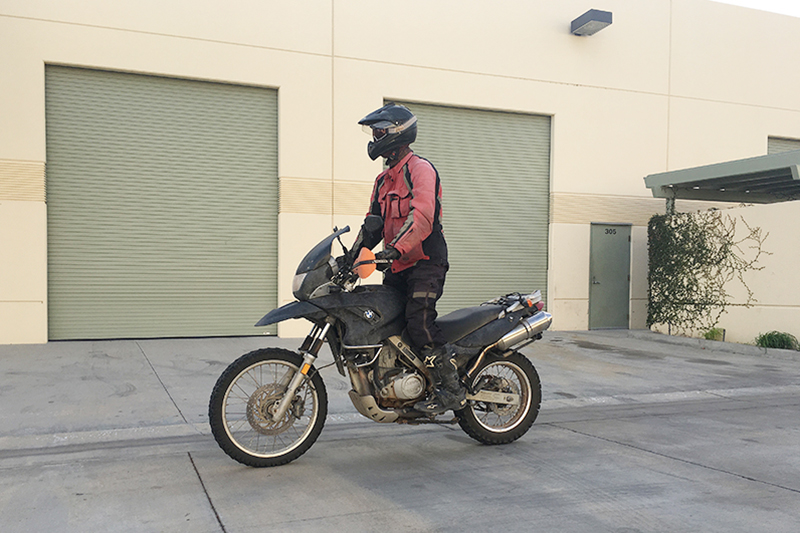
After you’ve gotten comfortable with this drill while seated, try it while standing up on the pegs (again, in a practice area away from traffic and other hazards). Standing on the pegs changes the balance and maneuverability of a motorcycle, and we’ll cover this important technique in more detail in future columns. If you are at the “I know I’m supposed to stand up off-road but I’m not sure why” stage, repeating this drill while standing may give you some clues—let me know what you discover!
Practice Pays
Learning this drill requires a small investment of time and effort, but pays huge dividends. With practice, you may find that you can come to a stop for a full second or longer before putting a foot down. Even if you never get past the point where you come to a full stop and immediately put a foot down, you’re still developing a skill that many motorcyclists never acquire—learning to ride very close to zero mph.
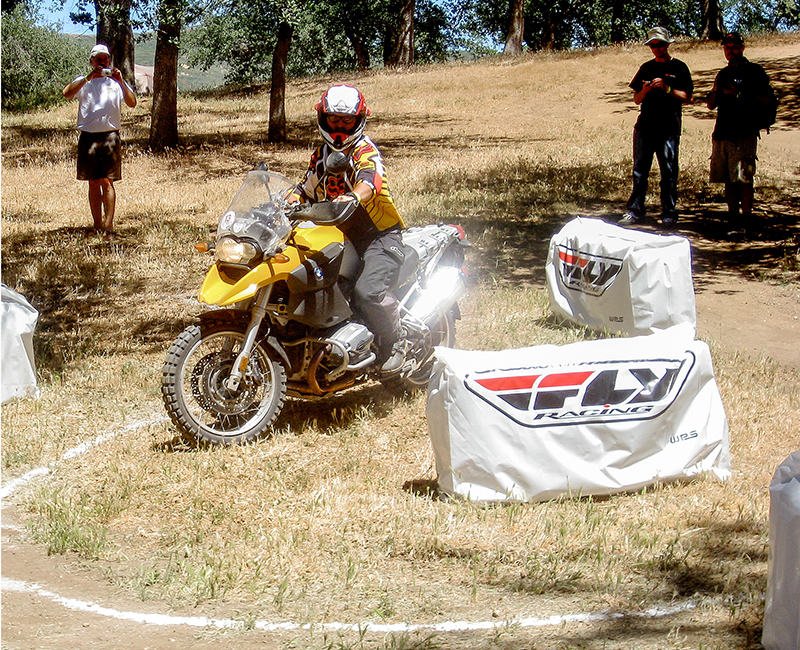
Every time you try to stop without putting a foot down first, you ride very slowly with your feet on the pegs. Learning to comfortably operate your motorcycle at slow speeds makes all aspects of riding—U-turns, parking, starting from a stop on hills—easier. And the benefits multiply off-pavement: navigating through obstacles, over bumps and around low-traction turns becomes less challenging.
I look forward to comments about your experience with putting this drill into practice. Good riding!
For more information:
EarthRider’s SkillzDrillz schedule
EarthRider’s Facebook page
Email Laine MacTague at EarthRider.amgi@gmail.com
CONTINUE READING: EarthRider 03: Control Lever Setup for Adventure Riding








Just enjoy the journey. Destination is not important.
and at 5 mph, that journey will be across the parking lot.